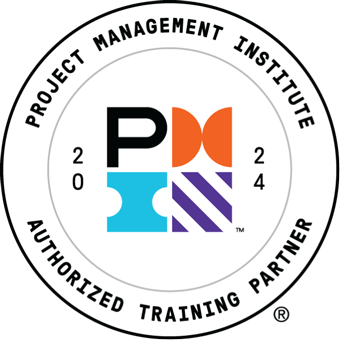Features
Premium video tutorials
Award-winning instructors
Personalized learning
Get certified
Learn at your own pace
Mobile (learn on-the-go)
Unlimited tests and quizzes
Regularly updated content
Overview
The GoSkills CAPM® Foundations course is ideal for beginners or those needing a refresher on the fundamentals of project management. The foundational knowledge covered in this course is essential for anyone wanting to pursue a CAPM credential or start a project management career.
In this CAPM Foundations course, you will learn the most commonly used principles, tools and techniques for effective project management. By the end of the course, you will understand which tools are most commonly used, how to apply them successfully on your projects, and how to avoid some of the typical errors.
The skills you learn in this course can help enhance your value to current and future employers, serve as a stepping stone in your project management career, and give you the confidence and knowledge you need to work more efficiently as part of a project team.
If your goal is to become a Certified Associate in Project Management, this course is a great starting point. Once you have mastered the tools and techniques in this Foundations course, we recommend taking the CAPM Certification Training course, which is specifically focused on CAPM exam topics. This powerful duo will give you the knowledge required to pass your exam with flying colors.
In this course, you will learn:
- The principles and tools normally used when planning a project.
- The best practices for execution and control of your project plan.
- The elements of a project risk management plan including risk analysis and risk response.
- The agile and adaptive approaches in project management used to manage uncertainty.
- How to integrate the activities of project team members across all knowledge areas and project phases.
- When tailoring is required to project deliverables, timing and resources and how this will affect the project scope or quality.
- How continuous improvement affects project management today.
This course provides 28 project management education hours or PDUs to maintain your certification. GoSkills is a PMI Authorized Training Partner (ATP).
Once enrolled, our friendly support team and tutors are here to help with any course related inquiries.
FAQ
Who is this course for?
If you would like to prepare for the CAPM certification exam, but you need to learn the basics of project management first, this course is for you.
This course is ideal for anyone who needs a solid foundation in the essentials of project management, specifically focused on the required knowledge for CAPM.
Once you have mastered the tools and techniques in this Foundations course, we recommend taking the GoSkills CAPM Certification Training course which is specifically designed to prepare you for the exam.
Does this course provide project management education hours or PDUs?
Yes, the GoSkills CAPM Foundations course provides 28 project management education hours, or 28 PDUs to maintain your certification. This surpasses the CAPM certification requirements of at least 23 hours of project management education. GoSkills is a PMI Authorized Training Partner (ATP).
Is it worth getting a CAPM certification?
Gaining a CAPM certification can enhance your career options and even boost your salary. Not only will you learn how to better work within a project team and improve your project management skills, CAPM is an industry recognized certification worldwide. As CAPM is suitable for individuals without a lot of project management experience, it’s a great way to get your foot in the door by proving your expertise to employers.
How do I become CAPM certified?
- Meet PMI’s prerequisites for CAPM certification of:
- Secondary degree (high school diploma, associate’s degree or global equivalent)
- 23 hours of project management education completed by the time you sit for the exam (this course provides 28 hours of project management education).
- Study for the CAPM exam.
- Take an online course like GoSkills’ CAPM Certification Training course, complete with exercises and quiz questions to test your knowledge. It is also helpful to review PMI’s CAPM Handbook, and the PMBOK® Guide—Sixth Edition.
- Pay the PMI CAPM exam fee and take the CAPM exam.
- This can be an in-person Center-based exam, or an online proctored exam.
- The exam has 150 questions, and you have three hours to complete it.
- Maintain your certification by retaking the exam every five years.
Is there a work experience requirement for CAPM?
As of August 28, 2019, PMI has removed the work experience requirement. Prior to this change, PMI required 1500 hours of work experience to qualify.
How much does a CAPM make?
Your CAPM certification can help you demonstrate your expertise and value to employers, and boost your salary. Project managers who hold a CAPM certification can earn more than their non-certified colleagues. According to recent PayScale data, the average salary for a CAPM certification holder in the United States is $66,000. As CAPM is an entry-level certification, the more practical experience you gain will help set you up for more lucrative positions.
Which certification is better, CAPM or PMP?
It is not necessarily about which certification is better, but rather which is more suitable for you at this stage of your career.
The PMP certification is suitable for more experienced project managers who already have 3-5 years of experience leading projects, a secondary degree or four-year degree (this varies depending on your years of project management experience), and 35 hours of project management education.
If you meet these requirements, we would recommend you go for the PMP certification, and prep for the exam with the GoSkills PMP® Certification Training course. As the prerequisites are more advanced, the exam topics are more in-depth than for CAPM.
The CAPM certification is ideal for individuals without a lot of project management experience wanting to kickstart their careers and showcase their knowledge to potential employers. If you are new to project management or you do not yet have the necessary work experience, CAPM is a better choice to build up your credentials.
Once you have obtained your CAPM certification, you can gain more project management experience and take the PMP exam at a later date if you choose to.
Is GoSkills a PMI ATP?
GoSkills is a member of the PMI ATP Program. To earn the PMI Authorized Training Partner designation, a provider must meet rigorous standards for quality and effectiveness. By training with GoSkills, you can be confident that your course content and instructors meet the highest quality standards.
Do you have other online project management courses?
GoSkills offers a range of project management courses online. All of our project management courses allow you to earn contact hours and PDUs to put towards certification with PMI.
Can I train my team with GoSkills?
Absolutely. We work with many businesses, big and small, to train and upskill their staff. Get started here or contact us with your requirements.
Summary
This course has been retired


